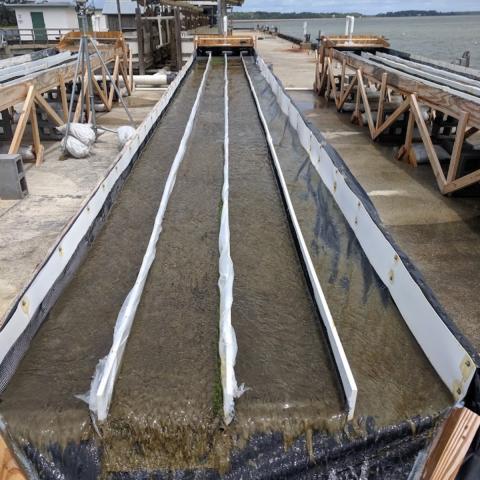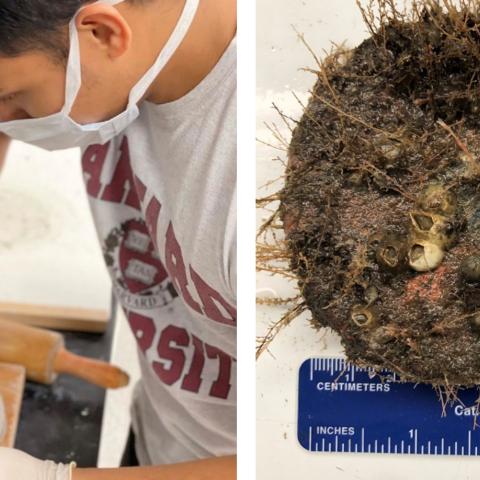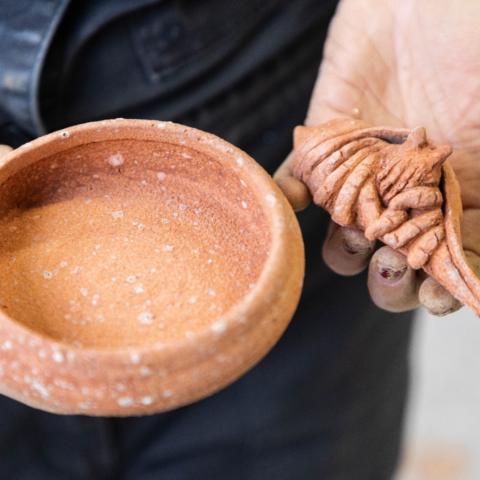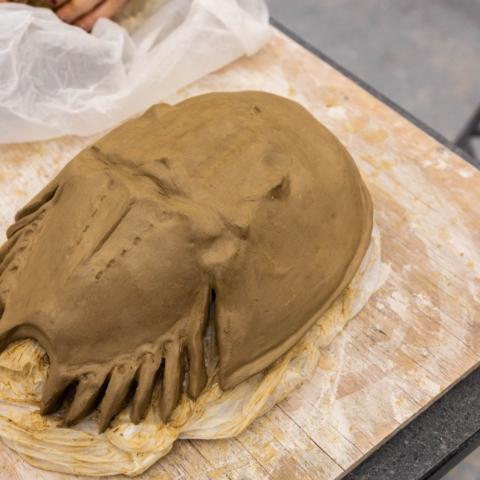Grant Year
2022Project Leader/s
Project Description
In a first-of-its-kind for the Thoreau Foundation’s Faculty Grant Program, a new cross-disciplinary collaboration at Georgia Southern University brings together students and faculty from the fields of biology and art to both improve the health of Georgia’s coastal ecosystem and foster artistic self-expression.
As John Carroll, Associate Professor of Biology and co-founder of the project, explains, “Coastal Georgia is a biodiversity hotspot that is experiencing rapid population growth and coastal squeeze. As human pressures such as development and nutrient pollution increase along the coastline, it is critical to engage students with hands-on experiences and creative thinking to communicate about these problems and address them.”
The project, Bridging Art and Science to Improve Coastal Resiliency, has two primary dimensions. First, the project is testing Algal Turf Scrubber (ATS) technology, an emerging technology, to help mitigate nutrient pollution issues. In ATS systems, a thin layer of water flows down a gently sloping table, allowing turf algae to grow. As water flows over the algae mats, nutrients are removed and the water is cleaned. This technology has the potential to mitigate nutrient pollution from increasing human activity on the Georgia coast and beyond. The resulting algal biomass has many potential uses, and the second objective of this project is to transform the algal biomass into ceramics. As Carroll recounts, “We focused on ceramics because they have multiple applications, from self-expression to a mechanism for science communication to ceramic products that can be molded and used as substrate for restoring oyster habitats.”
Students are involved in both the biological aspects of the project – sampling and harvesting the algal biomass on the turf scrubber – as well as the artistic expression portion of the project – creating ceramic products with the algal biomass material. “We have had biology students exploring the recruitment of marine organisms to the ceramics made with ATS biomass and art students creating marine and nautical themed ceramic products with the biomass,” says Carroll. Service-learning projects provide direct experience that helps students retain knowledge as well as change attitudes and behaviors. “UnEssays” provide students the opportunity to reflect and summarize a topic in a creative and innovative way that, importantly, is not a traditional academic essay. In addition to helping students develop applied research and technical experience, Carroll and his colleagues hope that their students will develop a sense of self-identity and improved communication skills, preparing them to take on leadership roles in the future.
Carroll is most excited about the cross-disciplinary nature of this project. “Both nutrient pollution and oyster loss are major problems facing coastal habitats that have far-reaching impacts on coastal communities and economies. Working with the ATS could help address the first issue, but I never would have thought to turn the resulting algal biomass into ceramics. That idea came from a collaboration between Biology and Art faculty. The other thing I find really exciting is that we can expand the experience of students who are too often put into silos at universities. Biology students can learn more effective communication and the importance of self-expression. Likewise, art students can learn about environmental issues and create things that can be really powerful tools for environmental conservation.”




